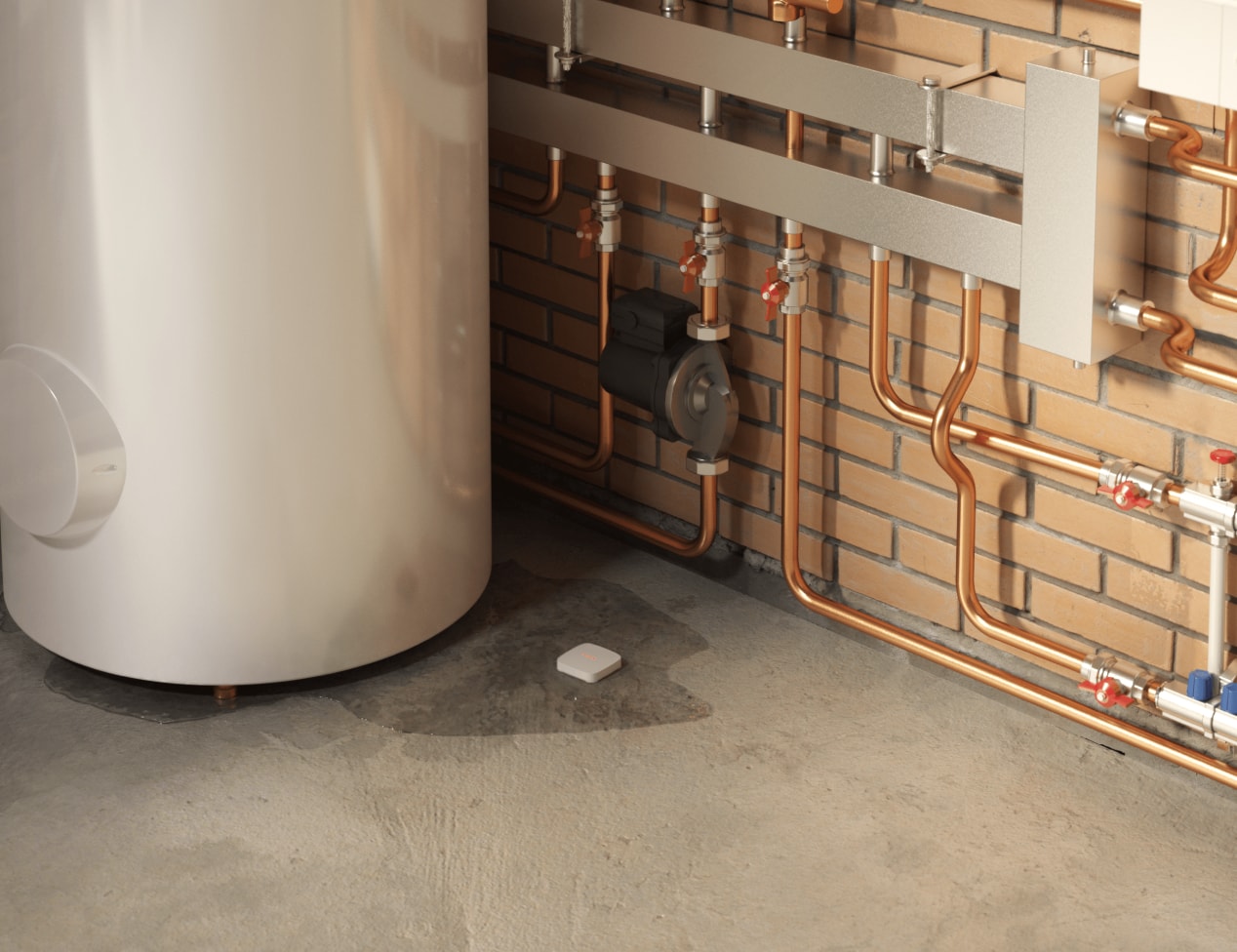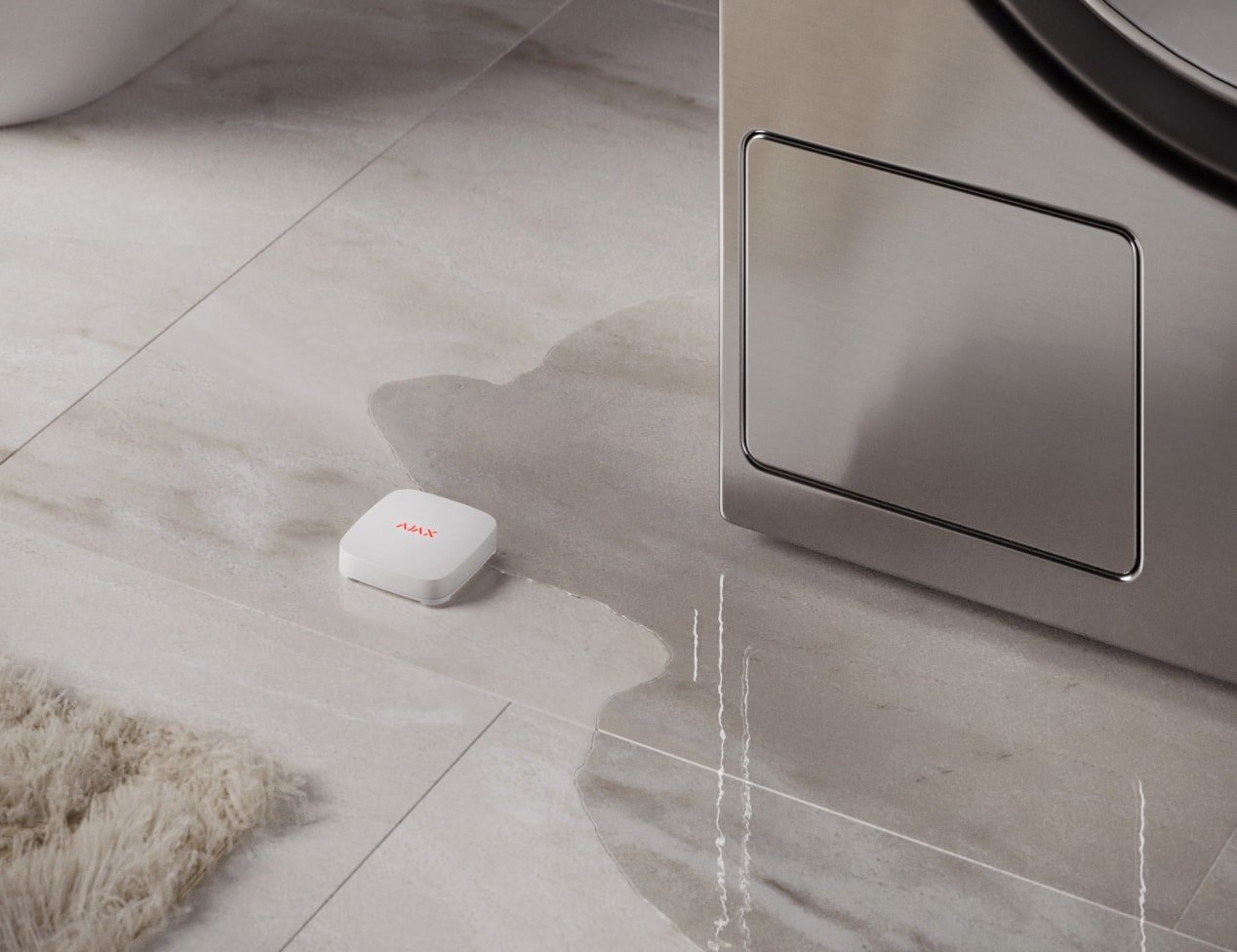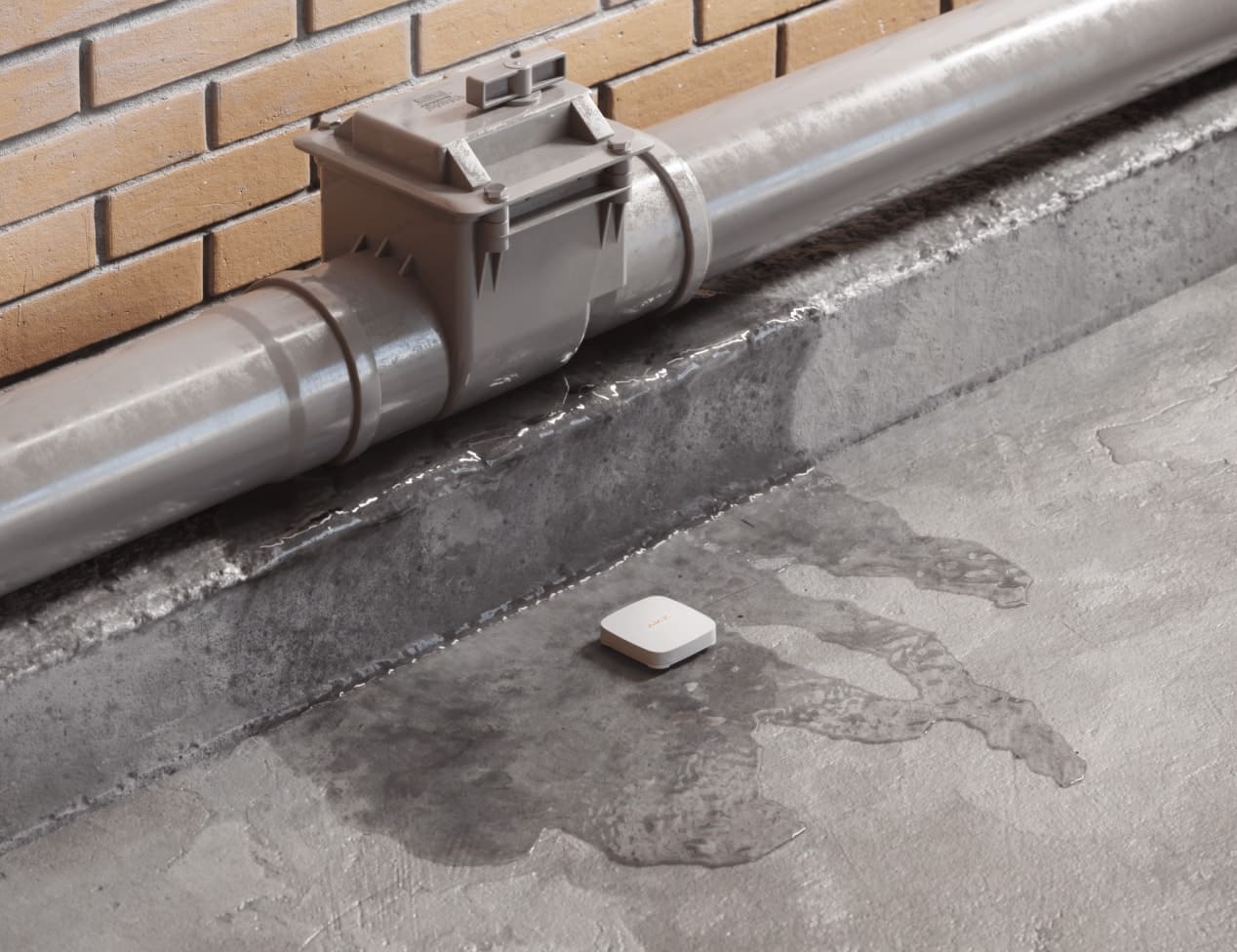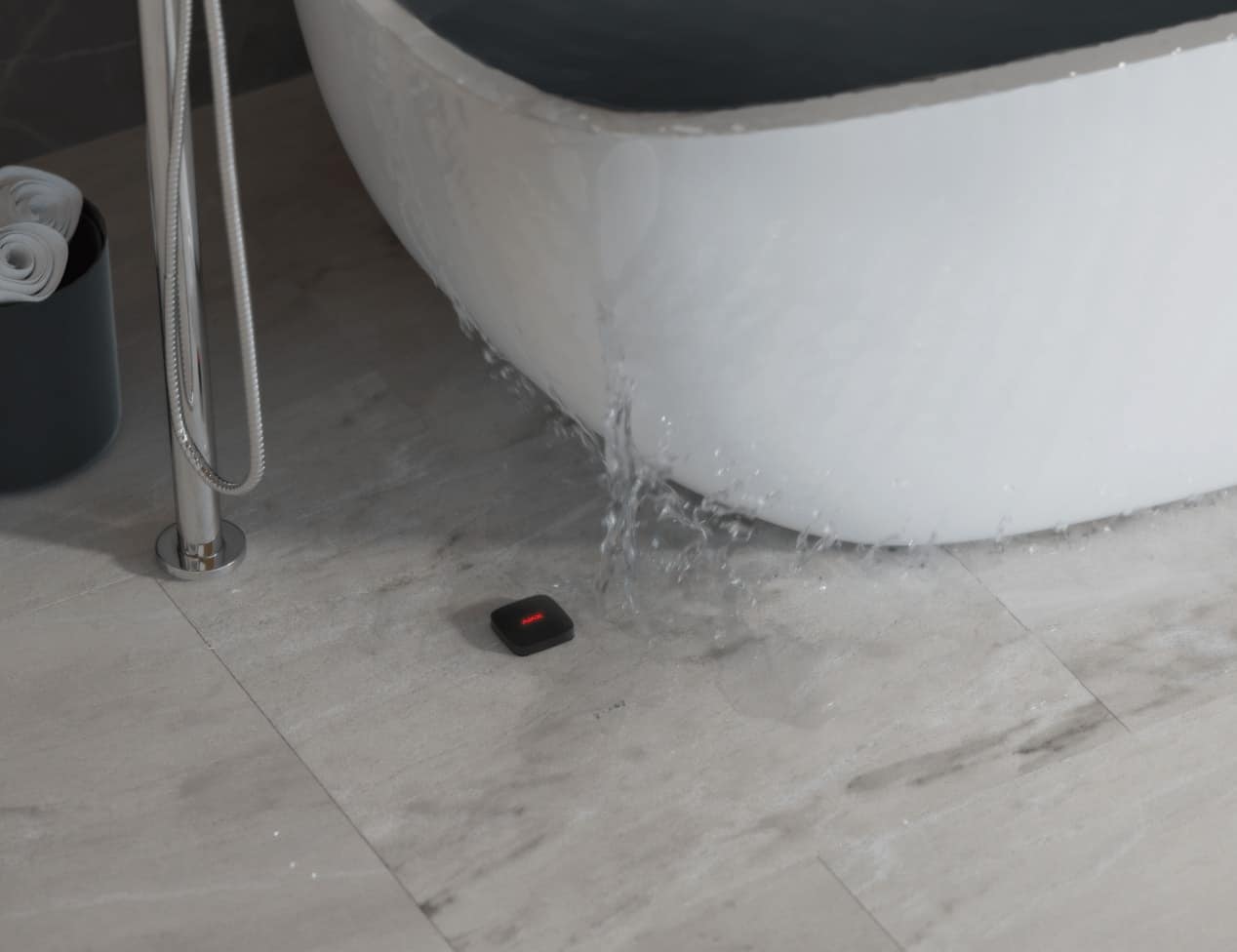For advice or a quotation
Menu
For advice or a quotation
Let Fairlea install an Ajax LeaksProtect system into your home or business.
The team at Fairlea will identify the most appropriate location to install an Ajax LeaksProtect device. We can connect it to an anti-flooding system to prevent a leak becoming a flood. The system works 24/7 and only needs very limited maintenance which we can supply.
With a height of just 14mm, the Miniature LeaksProtect detectors will fit anywhere. Place them where water leaks are likely and be notified whenever there is an issue.




The Ajax LeaksProtect device will instantly alert you to the leak, giving you valuable time to take action. The IP65 housing detects water on all sides and the battery can last up to 5 years.
This device could be the difference between your property or premises sustaining significant water damage or not.
Up to 5 years of operation from battery
Works 24/7
Up to 5 years of operation from battery
Works 24/7
Contact pairs detecting water
Ajax LeaksProtect detectors, installed by Fairlea, can protect your business from flood. If a leak happens, automated notifications will let you or your facilities manager know where to send the plumbers.
Up to 200 detectors in the system
Name and room of the detector location in the notification
For a higher end installation, Fairlea can integrate LeaksProtect water leak detectors with Wireless Relay or Wireless Wall Switch as well as electro valves to create a smart antiflooding system. Homes and businesses in high flood-risk areas will greatly benefit from the advanced warning.
Replay
Replay
Replay
Replay
Replay
Water
LeakProtect
Relay
Electrovalve
Replay
Indication
Relay
Electrovalve
Replay
Remote Switch
Relay
Electrovalve
Replay
Schedule
Relay
Electrovalve
Fairlea recommend and install the Ajax systems as they are modern, reliable, feature-rich and easy to use. With Fairlea both supporting and maintaining your systems, you are left with peace of mind and systems in place for when things go wrong.
Have a look at the rest of our website for the additional fire and security features provided by this system or better still, give us a call on 01628 564 940 and one of our qualified installers can answer any questions that you might have. Alternatively, click on the Get a Quote button below for an idea of the cost of us supplying and installing a system for you.
Answer a few simple questions to get an instant estimate for a fully installed system.
"*" indicates required fields
| Item Name | Item Quantity |
|---|
Have questions? Give us a call, we will be happy to help
A complete security system must include detectors that can ensure the safety of the protected area. One of these detectors is a water leakage control sensor — a device that is designed to detect and prevent flooding.
To select a water leakage sensor, you need to understand its types and principles of operation. How does a water leak sensor work
Most flood sensors have a similar package:
The water leakage sensor is most often installed on the floor in potentially problematic pipeline areas, bathrooms and kitchens. After water enters the device’s contacts, the electrical circuit is closed, and the current flows to the control panel. After receiving a signal about the activation of the sensor, the control panel performs the programmed actions: turning on the siren, shutting off the water supply valve and, if there is a Wi-Fi or GSM connection, notifying the users of the system. After the sensor contacts dry, it switches to the usual mode of operation. Primitive leak detection devices are dispensed with only by the operation of a siren.
Water leakage sensors use a low-voltage power supply for operation, which does not exceed 5 watts and does not pose a danger to the owners of the premises.
Leak sensors differ in the principles of operation. Classification of the water leakage control sensor occurs according to several criteria:
According to the type of connection of the touch sensor with the control panel — wired and wireless.
The alarm signal from the leak detector to the control panel is transmitted either via a wired connection or via radio. In the first case, the wire is the power supply source for the sensor. When the contacts close due to water leakage, the voltage in the power circuit decreases and the current increases. The controller connected to the sensor detects the change in parameters and gives the command to close the water supply or turn on the warning signal.
The operation of the wireless water leakage sensor is provided by independent energy sources: batteries or accumulators. The built-in transmitter and controller fix fluctuations of the electromagnetic field. The signal about leakage and closing of contacts is sent to the translator, and after processing — to the electronic control unit.
The range of wireless sensors differs depending on the manufacturer, but in most cases — the distance is up to 100 meters, in the absence of obstacles.
Wireless water leakage sensors are more convenient in the way of installation. It is easier to integrate them into the interior. Wired leakage sensors require wiring lines to be masked.
The location of the water leakage sensor depends on the greatest likelihood of leakage. It is often a bathroom, toilet, kitchen. Ways to place protection against water leakage — floor and internal.
If all plumbing communications are laid, floor placement of water leakage sensors is used. The detector is installed with contacts to the surface, and to avoid false positives, it is better to install it at the height of 3-5 mm above the surface.
When placed internally, the contact plates of the sensor are brought out 2-3 cm above the floor. This height of location eliminates false alarms of the system in case of accidental splashes.
The main advantages of having flood sensors in the room:
It is worth investing once in a quality device that will prevent a flood so that when a threat occurs, you do not have to pay for the consequences of the incident.
It is worth investing once in a quality device that will prevent a flood so that when a threat occurs, you do not have to pay for the consequences of the incident.
Water leakage sensors with the ability to connect to Wi-Fi or GSM, in addition to sound and light signals, transmit messages to users of the system mobile devices. Thanks to this, residents will be notified of the accident, even outside the home.
If the installed detector is connected to automatic shut-off valves, the user receives a security system that is able to automatically close the emergency section of the pipeline. This requires the installation of valves with servo drives. They are controlled by a central control panel. In the event of an alarm from the water leakage sensor, the controller shuts off the water supply, which minimizes the consequences of an accident.
Ajax LeaksProtect wireless flood sensors detect a leak when the first drops hit the sensor contacts. The system will instantly raise the alarm, after which users and the security company will receive notifications about the incident. And by controlling the solenoid valve through a relay, the Ajax system will automatically shut off the water until the emergency service arrives.
The Ajax Water Leak Sensor is a wireless device that works via Jeweler radio communication.
No tools are needed to install LeaksProtect. The flood sensor is to be installed in the places of the alleged leakage: under the bathtub or bathroom sink. The body of the flood sensor is protected from dust and moisture, and the small size allows you to place the device in a hard-to-reach place.
To install an anti-flood system, the user needs:
In the event of a leak, the system owner can turn off the water using the Ajax mobile application, and thanks to the installation of a relay, automatic interruption of the water supply will be available after the wireless leak sensor alarm is triggered.
To activate LeaksProtect, you need to make the following steps:
Before commissioning, you need to check the device for proper operation immediately after setting up the wireless flood sensor. To check, you need to wet the flood sensor. If the alarm does not work, you should pay attention to the correct connection, the integrity of the electrical circuit, the condition of the sensors, the control module and valves.
After the problem is found, the flood simulation should be repeated.